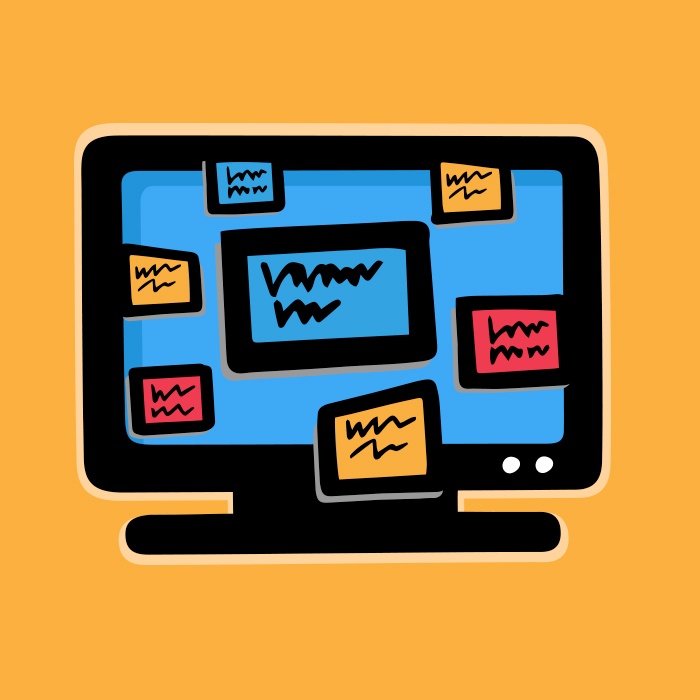The idea of interacting with sleek, sophisticated technology used to be the stuff of science fiction. Now, it's an essential part of everyday life. Younger and younger generations are spending more time outside of work interacting with consumer and mobile applications, be they on phones or other exciting new devices. To entice users, these B2C applications often feature high levels of polish in their design and usability. They use clear descriptions and calls-to-action, and they're organized in a natural way that users can instantly understand and easily navigate. This trend towards thoughtful, user-centered design has raised the bar for what users expect an application to look like and do—and not just in the B2C space. Though their purpose and focus are different, B2B applications are also being held to these changing standards for user experience.
B2B applications prioritize things like efficiency, productivity, integrity of data and safety. Form often takes a backseat to functionality. But the changing demands of the market insist that designers take the user experience seriously. So, how do you do that? Here's a to-do list to help you better understand your user and in turn, meet their expectations as well as their needs.
Identify different user groups & understand their needs
The best B2B applications help ease communication and collaboration across an organization. In the effort to support a broad range of users, many B2B applications provide the same functionality for everyone. But that's not really how people work. Each user type may only use a small part of the overall functionality—giving all groups access to everything can create confusion and increase the risk for accidental errors and data loss. Taking the time to understand your different user groups, consider their needs and create specific privileges/functionality based on those needs will greatly improve the usability of your B2B app.
In practice
Painting a vehicle is very expensive (the paint itself can cost $200 to $800 per gallon), and it takes years of practice to know how to do it right. A simple mistake mixing or applying the paint can cost a vehicle collision shop hundreds of dollars. When Summa created a B2B application for a company looking to reduce that risk, we identified a user group for our clients' painters and then provided the ability for them to set privileges for specific users. This functionality allows shop managers to limit the quantity and price for each painter in their shop. The result? Less-experienced painters may have quantity and price limits associated with their profile, requiring them to seek approval before mixing the paint and reducing the chance of an error.
Identify ad hoc & supplemental tools
When a B2B application doesn’t meet the needs of users, they often find other ways to get things done—ad hoc methods that quickly become standard procedure. The problem with these methods is that they can force users to swivel between tools, which increases the risk for errors or bad data. When designing your application, it's key to recognize the whys and hows of your users' ad hoc tools, and try to incorporate their functions into your product. Doing so will help you create a far more convenient, productive, satisfying application for your client.
In practice
The way users describe the process for completing a task and how they actually complete the task can be very different. In our projects, we collaborate with users first to discuss the tasks and pain points associated with the current system and understand their vision for the new system. Afterwards, we shadow users for the day to validate and uncover additional information about their activities and tasks. For example, we once discovered that users were actually using written, pen-and-paper lists to help them remember to check on the progress of long projects at specific times. So, when designing our app, we incorporated functionality that would remind users of the status of longer projects—no paper needed.
Understand the legacy systems
When charged with modernizing an application, the first reaction might be to rethink everything. As tempting as they may be, it’s not always the best idea. When users are so familiar with existing systems, they can be very reluctant to change the way they work, or they might view the new tools as worse than the existing ones. Sometimes, the best solution is to make changes incrementally, so users don't have to relearn a process or change the way they think about their activities all at once. Having to develop new ways of thinking about activities and tasks can negatively impact productivity, and that momentary loss of productivity may cost more than the long-term benefits of efficiency. Be sure to always keep that balance in mind.
In practice
Developing designs quickly and incrementally alongside our clients helps us validate we're on the right path. This includes developing rapid prototypes that simulate the experience of a new application. We use the rapid prototypes to demonstrate the places where we want to depart from how the legacy system worked and test if the new system and design patterns make sense to our users.
Want to make your B2B applications work better?
Our experienced team of designers, strategists and architects can create the tools to transform your business. Whether you're curious about creating a new tool or revamping an existing one, we have the know-how to help you be swifter, smarter, and get a leg up on the competition.





